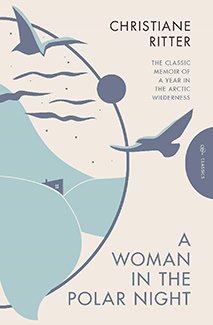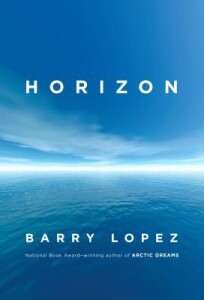
Translated by Jane Degras
In 1934, the painter Christiane Ritter leaves her comfortable life in Austria to join her husband Hermann in Spitsbergen, an island in the Svalbard archipelago, which lies between mainland Norway and the North Pole. It is one of the most northern inhabited places on the planet. Hermann has been spending increasing amounts of time there, hunting and trapping, and as a result has found a new serenity. Christiane is there to stay with him for a year in a tiny hut, the size of a large closet, where they are joined by a young hunter named Karl.
If 1934 makes your ears perk up, you recall that in August 1934 Hitler merged the chancellery with the presidency into the title of Führer, thus completing his rise to power. Christiane almost never mentions the politics back home where their democracy is being demolished by a dictator, partly because she is too isolated to hear more than a few random scraps of news, and partly because she is absorbed by her new life. Many of us dream of such isolation these days as our own democracy is attacked.
Before leaving, she imagined she would spend her time there reading books, sleeping a lot, and darning socks. But she quickly learns otherwise. There’s a reason the nearby coasts are called Anxiety Hook, Distress Hook, Misery Bay and Bay of Grief.
The closest neighbor is 60 miles away, and even they are inaccessible in the winter’s depths. She and Hermann have brought some provisions, but mostly rely on what they kill. Her description of preparing her first seal dinner is eye-opening. She is sometimes left alone for days and weeks while the men hunt, and she begins to grasp the “terror of nothingness” that has driven men—and at least one woman, or so the story goes—mad.
Now everything around us is quite dead; even the battering of the storm has ceased. A heavy mist weighs on everything; the hut is shrouded in stillness and darkness. It seems to me as if only now has the real night fallen, and slowly my courage begins to seep away. Perhaps the sun will never come back again. Perhaps it is dark all over the world.
Yet hard as life in the Arctic is, she finds much to appreciate, especially as an artist. Describing the early morning, she says, “The whole sky is deep lilac, lightening into a tender cobalt blue at the horizon, over the sea of ice. From the east a pale-yellow brightness spreads, and the frozen sea, reflecting the heavenly colours, shines like an immense opal.”
In one passage I loved, she compares the twilight at the beginning of the Arctic night with ‘the delicate, wonderful paintings of the Chinese painter—monks, in which the immense and mysterious effect is achieved entirely by gradations from light to dark grey, by forms indicated rather than outlined.’
She finds herself changing. “Why have I been so shaken by the peacefulness of nature?” She even comes to appreciate the isolation.
I am conscious of the immense solitude around me. There is nothing that is like me, no creature in whose aspect I might retain a consciousness of my own self; I feel that the limits of my being are being lost in this all-too-powerful nature, and for the first time I have a sense of the divine gift of companionship.
I appreciate all the details of daily life. Her first responsibility is as a housewife, wrestling with the cracked stove that is their only source of heat, sewing curtains from a scrap of fabric once used as a sail. Nothing is wasted. Driftwood logs are propped against the hut to keep it from being blown away. Paths must be shoveled again every day.
There are gaps in the story. We don’t know why Hermann started spending so much time there, when it seems he and Cristiane have a close relationship. They have a teenaged daughter back in Austria, mentioned once, I believe, but we don’t know how Christiane feels about leaving her for a year. I also wondered how Christiane felt when she learned that Karl would be joining them, though she does show us how grateful she is for his help as the year continues.
The book is written as a journal, mostly in the present tense, so we live through her year of changes with her. I love winter, the cold, and the snow, though I think the hut in Spitsbergen would be beyond even me. I loved the book, though, for its appreciation of the natural world and our place in it, and for the brief escape into a simpler, more rigorous life.
What book have you escaped into recently?
